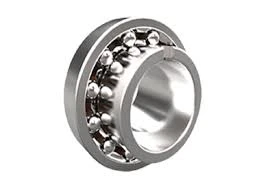
Dec . 15, 2024 02:23 Back to list
Understanding the Structure and Function of Thrust Ball Bearings in Mechanical Applications
Understanding Thrust Ball Bearings An Overview
Thrust ball bearings are crucial components in various mechanical applications, designed to handle axial loads in one direction while allowing rotational movement. These bearings differ from other types of ball bearings in that they primarily support axial rather than radial loads. This specialized functionality makes them indispensable in machinery where thrust loads are predominant, such as in automotive and industrial equipment.
Structure and Components
A typical thrust ball bearing consists of a few key components balls, a shaft washer, a housing washer, and possibly a cage to keep the balls evenly spaced. The shaft washer is mounted on the shaft, while the housing washer is secured to the machinery. The balls, housed between these two washers, facilitate smooth rotational motion while supporting axial loads.
The design of a thrust ball bearing can vary, but it generally features a flat surface on the washers where the balls rest. This design allows the balls to roll smoothly, minimizing friction and wear during operation. Additionally, thrust ball bearings can be classified into two main types single-direction and double-direction bearings. Single-direction thrust ball bearings support loads in one direction only, while double-direction bearings can accommodate axial loads in both directions, making them ideal for more complex applications.
Working Principle
Understanding the working principle of thrust ball bearings is essential for appreciating their functionality. When an axial load is applied, it creates a force that the bearing must counteract. The load is transmitted through the balls to the washers, allowing for smooth and stable motion. The design ensures that the contact surfaces remain minimal, reducing friction and enabling the system to operate efficiently.
thrust ball bearing diagram

As the shaft rotates, the balls circulate along the raceways, providing continuous support and reducing wear on the bearing surfaces. It's important to maintain proper lubrication in thrust ball bearings to enhance their performance and lifespan. Quality lubricants reduce friction between the balls and the washer surfaces, ensuring the bearing remains operational under high loads and temperatures.
Applications
Thrust ball bearings find application in various industries. They are commonly used in automotive components such as clutches and gears, where they help support axial forces during operation. In industrial settings, they are found in pumps, conveyor systems, and gearboxes, playing a critical role in maintaining efficiency and reliability.
Moreover, these bearings are suitable for applications that require high-precision movement, such as in aerospace and robotics, where any misalignment can lead to significant failures. The ability to handle axial loads effectively makes thrust ball bearings essential for maintaining the overall health of complex mechanical systems.
Conclusion
In summary, thrust ball bearings are vital components designed to support axial loads while allowing for smooth rotational movement. Their unique construction and functionality enable machinery to operate efficiently under various conditions. Understanding the principles behind thrust ball bearings helps engineers and technicians select the right components for their applications, ensuring durability and performance. As technology advances, the design and formulations used in thrust ball bearings will continue to evolve, leading to even more reliable and efficient machinery across different sectors.
Latest news
-
Premium Deep Groove Ball Bearings | High Speed & Reliability
NewsAug.29,2025
-
Durable Scaffolding Clamps - Secure & Reliable Tube Connectors
NewsAug.28,2025
-
Common Failures in Thrust Ball Bearings and Solutions
NewsAug.22,2025
-
How Tapered Roller Bearings Can Take Shock Loads
NewsAug.22,2025
-
Angular Bearings in High-Precision Spindles
NewsAug.22,2025
-
The Impact of Misalignment on Cylindrical Roller Bearing Performance
NewsAug.22,2025
